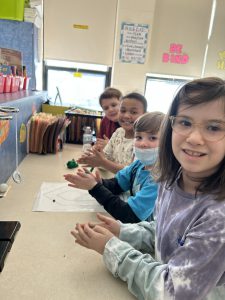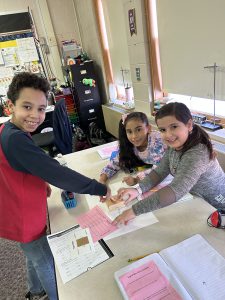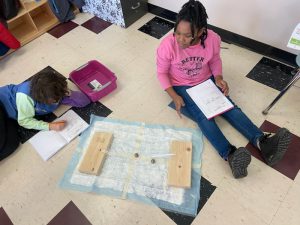Elementary students across the Cohoes City School District are taking part in hands-on experiments that integrate science and engineering thanks to the Smithsonian Science kits delivered to each school as part of the elementary science curriculum.
 “Our district has embraced the Smithsonian science kits because they enhance the Next Generation Science Standards and give students the opportunity for real world science activities,” said Assistant Superintendent of Educational Services Dan Martinelli.
“Our district has embraced the Smithsonian science kits because they enhance the Next Generation Science Standards and give students the opportunity for real world science activities,” said Assistant Superintendent of Educational Services Dan Martinelli.
During the first trimester, first grade students learned how living things stay safe and grow; second graders learned how to stop soil from washing away; third graders learned differences and similarities between organisms; fourth graders learned how animals communicate with light and sound; and fifth graders learned how to identify materials based on their properties.
This trimester, third graders are delving into the “How Can We Predict Patterns of Motion?” kit. The first three lessons, called “Playground Science,” demonstrate motion and force. Mrs. Cherubino’s students at Harmony Hill School recently learned about the concept of force, using pendulums, playdough and a ball maze, and tug-of-war with a block.
“This kit is great for the students because they can relate to the lessons in the beginning and it sparks their curiosity,” she said. “They take what they know and build on it with cool new vocabulary and design experiments to test their hypotheses.”
An upcoming lesson this trimester involves “supercharged science,” where students will explore static electricity and how non-contact force can be used.
Similarly, at Van Schaick Grade School, Mrs. Keith’s third graders used pendulums, ball mazes, and beach balls to learn about force and how different applications of force will move an object a certain way.
“My favorite part is how hands-on it is,” she said. “All kids, whether they think they are interested in science or not, look forward to working in a group and completing activities together.”
Abram Lansing fourth-grade teacher Mrs. McGeorge likes how all of the materials are included in each kit and how the online resources are easy to access. “My students look forward to the science unit.”
 Using the materials in the, “How Does Motion Energy Change in a Collision” kit, her class was tasked with predicting outcomes of colliding marbles, by figuring out how two marbles before the collision affects the motion after the collision.
Using the materials in the, “How Does Motion Energy Change in a Collision” kit, her class was tasked with predicting outcomes of colliding marbles, by figuring out how two marbles before the collision affects the motion after the collision.
“The students built a model to demonstrate how energy moves and changes in a collision,” said Mrs. McGeorge. “They made a model first, using one moving marble and one stationary marble, and then built a model with two marbles, moving toward each other.”
Other upcoming kits throughout the year involve sending messages using sound, changing solids and liquids, exploring weather and climate, how energy gets to homes and using the sky to navigate.
“The hands-on and practical projects inspire the students and to see their thinking come to life is just a thrill,” said Mrs. Cherubino.
According to one of her students, “You get to do all sorts of things and it helps you learn about science.”
One of Mrs. McGeorge’s fourth graders agreed. “We feel it and touch it instead of just seeing it on a video, so we get to experience it.”